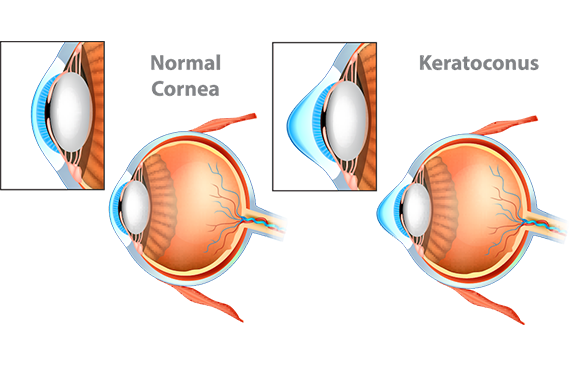Cornea
What is the Cornea?
The cornea is the front of the eye ball. It is very strong and crystal clear. It is curved in a way which makes it a very high power lens, capable of focusing light on the retina at the back of the eye. Anything which effects the clarity or uniform curvature of the cornea will decrease vision. The three main layers of the cornea are the epithelium, stroma, and endothelium. Examples of diseases of these individual layers are given below.
Cornea Diseases
Epithelial Disease: Recurrent Erosion
A corneal scratch damages the epithelial layer of the cornea. Fortunately, this layer constantly replaces itself and will heal without scarring. Occasionally, the epithelium heals across but is poorly adherent to the underlying stroma. It can pull away, often in the middle of the night or upon awakening in the morning. This is usually treated with a lubricating ointment, but sometimes requires surgical treatment.

Stromal Disease: Keratoconus
Keratoconus is caused by a weakened stroma which allows the cornea to stretch forward as a cone. This can lead to marked vision decrease. It is usually treated with rigid contact lenses, but might require surgical correction.
Endothelial Disease: Fuchs Endothelial Dystrophy
The endothelium is the very thin, innermost layer of the cornea which is very important in keeping the cornea crystal clear. These very active cells are gradually lost throughout life and they do not replace themselves. If the number of endothelial cells drops below a critical number the cornea will swell and become cloudy. Corneal swelling is treated surgically with a corneal transplant from a human donor.


